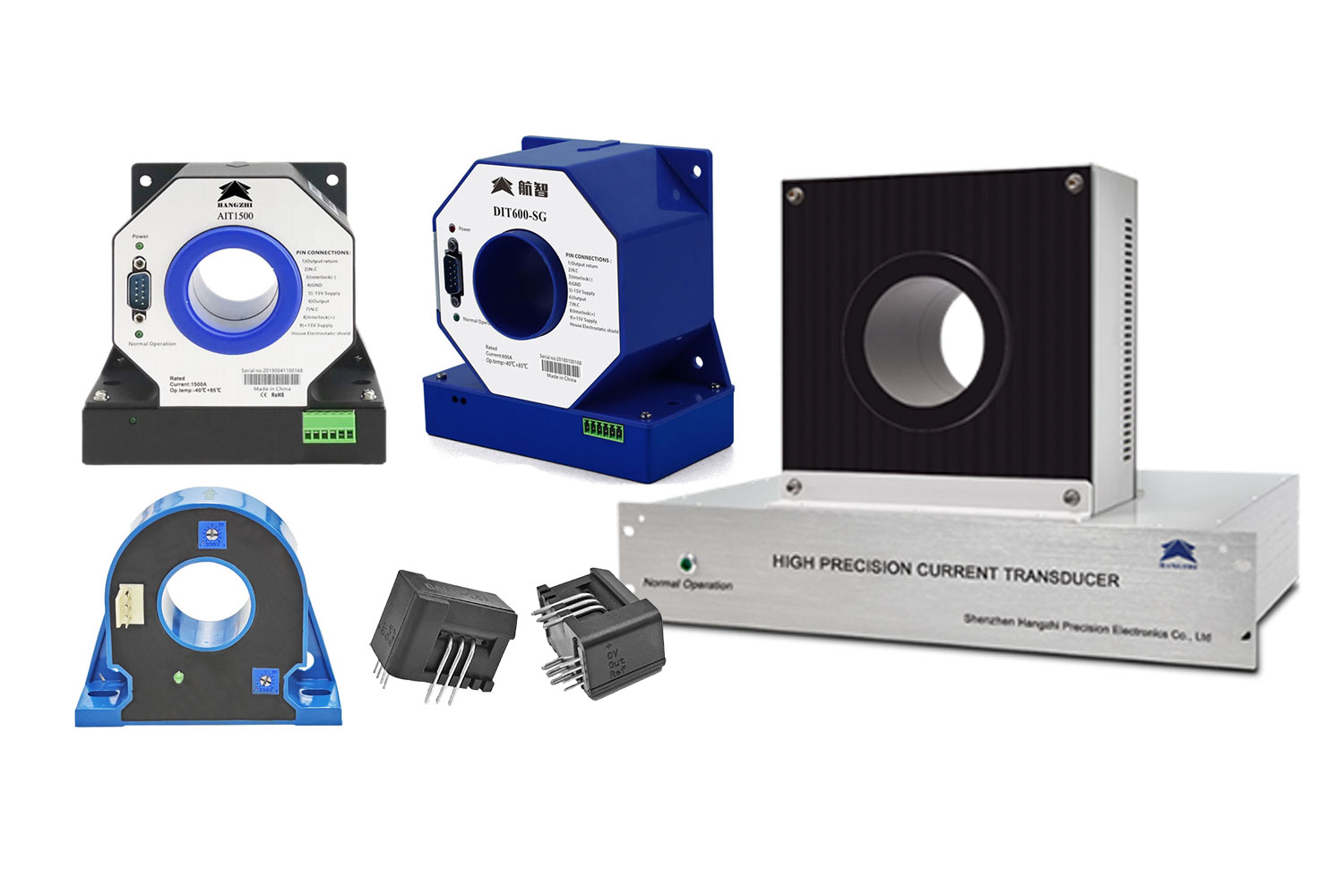
Tabla de contenido
Fluxgate vs. Hall Effect Sensors: Which Technology is Better for Power Grid Monitoring?
Precision and stability are essential for smooth, reliable power grid operations. To help achieve this, magnetic field-based sensors have become crucial tools for current measurement. Fluxgate current sensors and Hall Effect sensors are popular power grid monitoring options.
This article explores how each sensor works, where it’s used, and its specific strengths, helping you choose the best fit for your grid monitoring needs.
Power Grid Monitoring and Sensor Technology
Power grid monitoring is central to maintaining grid stability, detecting anomalies, and preventing power failures. This requires highly sensitive and reliable sensors that can measure magnetic fields indirectly, ensuring minimal impact from environmental variables.
Fluxgate and Hall Effect sensors are two leading sensor technologies that meet these needs. Both offer unique benefits, but choosing the right one depends on your specific application and monitoring requirements, from sensitivity and accuracy to cost-effectiveness.
Overview of Fluxgate Sensors
How Do Fluxgate Sensors Work?
Fluxgate sensors detect changes in the magnetic field surrounding a conductor, leveraging a magnetic core and feedback loops to generate precise current measurements. The core’s permeability shifts in response to magnetic fields, altering the current flow and creating a measurable voltage that correlates with the external field. These sensors accurately detect low-level magnetic fields, ideal for applications like power grid monitoring.
For more information on high-precision fluxgate current sensors, view our page on fluxgate high-precision current sensors.
Applications of Fluxgate Sensors in Power Grid Monitoring
In power grid monitoring, fluxgate sensors are often favored for their stability and accuracy, especially when current flow needs precise measurement without interference.
For instance, fluxgate sensors are often used in substations and other high-sensitivity applications where even minor deviations can impact grid performance. Their ability to accurately monitor complex AC/DC waveforms makes them invaluable in settings requiring low error margins and high resolution.
Advances in Fluxgate Sensors
Advances in fluxgate sensor technology have improved performance, longevity, and cost efficiency.
Innovations such as miniaturized cores and more efficient temperature compensation methods have increased fluxgate reliability, making them more accessible and accurate for longer-term broader grid monitoring applications.
Overview of Hall Effect Sensors
How Do Hall Effect Sensors Work?
Hall Effect sensors measure current by applying a magnetic field to generate a transverse voltage difference across the conductor. They are more straightforward and cost-effective than fluxgate sensors. They work on the principle of a conductive material generating voltage in response to a perpendicular magnetic field. However, they are typically more sensitive to temperature fluctuations and external magnetic interference.
To learn more on Hall Effect-based current transducers, visit our Hall-substituting current transducer page.
Applications of Hall Effect Sensors in Power Grid Monitoring
Due to their affordability and ease of integration, Hall Effect sensors are commonly used in scenarios where high precision is less critical, but cost-efficiency is prioritized. They are suitable for large-scale grid monitoring applications and power systems that require straightforward current measurement, such as in transformer stations or distribution systems.
Key Differences Between Fluxgate and Hall Effect Sensors
|
Characteristic |
Fluxgate Sensors |
Hall Effect Sensors |
|
Exactitud |
High, ideal for low-level field detection |
Moderate, suitable for general use |
|
Sensitivity Range |
Wide, from microamps to thousands of amps |
Limited to lower current measurements |
|
Temperature Stability |
High, with temperature compensation |
Variable, affected by temperature |
|
Cost |
Higher due to the complex design |
Lower, cost-effective for large scales |
When comparing these two, fluxgate sensors are generally better suited for applications requiring precision and stability, particularly in high-voltage environments. On the other hand, Hall Effect sensors offer a cost-effective solution in low-voltage applications where pinpoint accuracy is not as critical.
To learn more, view our knowledge center on sensor differences.
Which Sensor Technology Is Better for Power Grid Monitoring?
Your monitoring goals will ultimately determine whether you choose fluxgate or Hall effect sensors. Both technologies have their place within the power grid, depending on your varied monitoring needs.
Here is a brief recap of the two technologies to help you decide which sensor best suits your needs:
Fluxgate sensors are ideal for high-precision power monitoring, offering exceptional accuracy in detecting slight magnetic field variations. Their ability to provide error-free current readings makes them perfect for environments where reliability is crucial, such as substations and calibration systems. With the capacity to measure both AC and DC currents, fluxgate sensors ensure efficient, stable grid operations in demanding power grid applications.
Hall Effect sensors are a cost-effective solution for large-scale power grid projects where budget and general accuracy are vital concerns. While more precise than fluxgate sensors, they provide reliable data for applications like transformer stations and distribution networks. Their affordability and ease of integration make them suitable for widespread monitoring, especially in low-voltage environments where high precision isn’t critical.
Future of Sensor Technologies in Power Grid Monitoring
Fluxgate and Hall Effect sensors will likely see significant advancements as they adapt to these changing needs. For instance, fluxgate sensors may become more compact, cost-effective, and even more accurate, while Hall Effect sensors could experience improvements in their sensitivity and temperature stability. These enhancements will make both sensor types more versatile and applicable to broader power grid monitoring tasks.
Additionally, hybrid sensor technologies could emerge, combining the benefits of fluxgate and Hall Effect sensors to optimize performance. By integrating the high precision and stability of fluxgate sensors with the cost-effectiveness and ease of integration offered by Hall Effect sensors, these hybrid solutions could provide a perfect balance of accuracy, reliability, and affordability.
Making the Right Choice for Your Power Grid Monitoring
Deciding between Fluxgate and Hall Effect sensors depends on your unique application needs. Precision and temperature stability make fluxgate sensors ideal for high-stakes environments, while Hall Effect sensors provide an economical choice for widespread monitoring tasks.
For expert guidance on selecting the best sensor for power grid monitoring, consult our team today.
